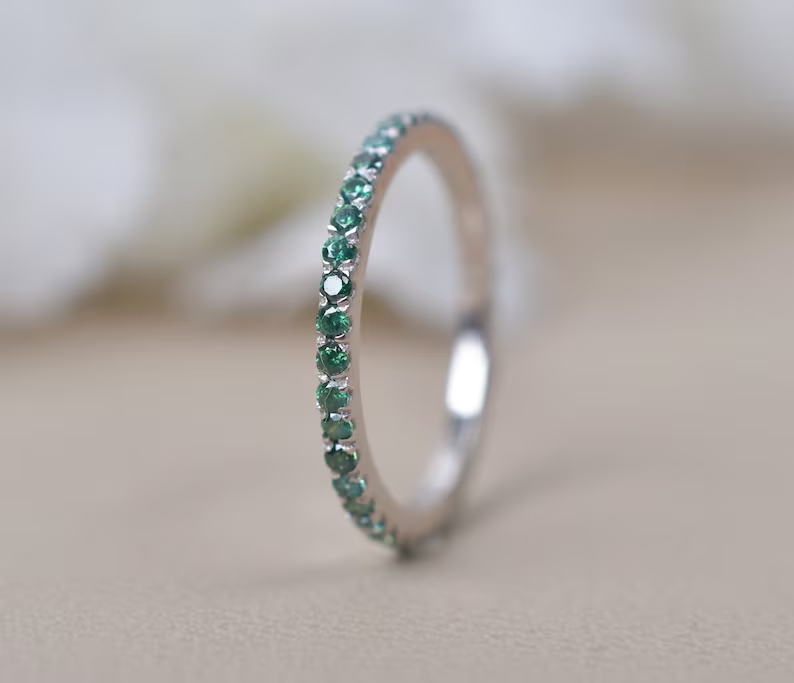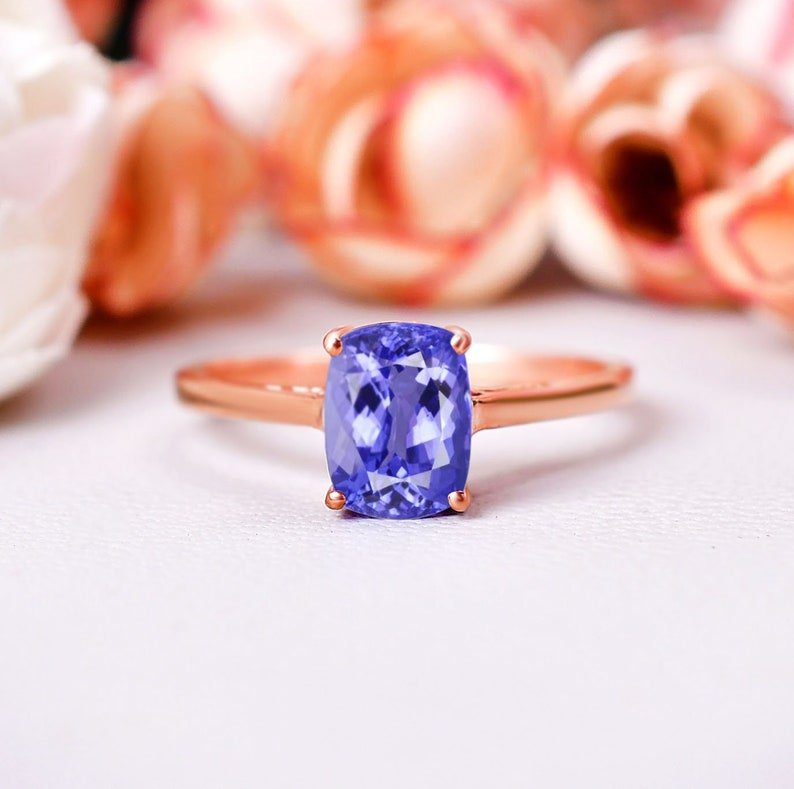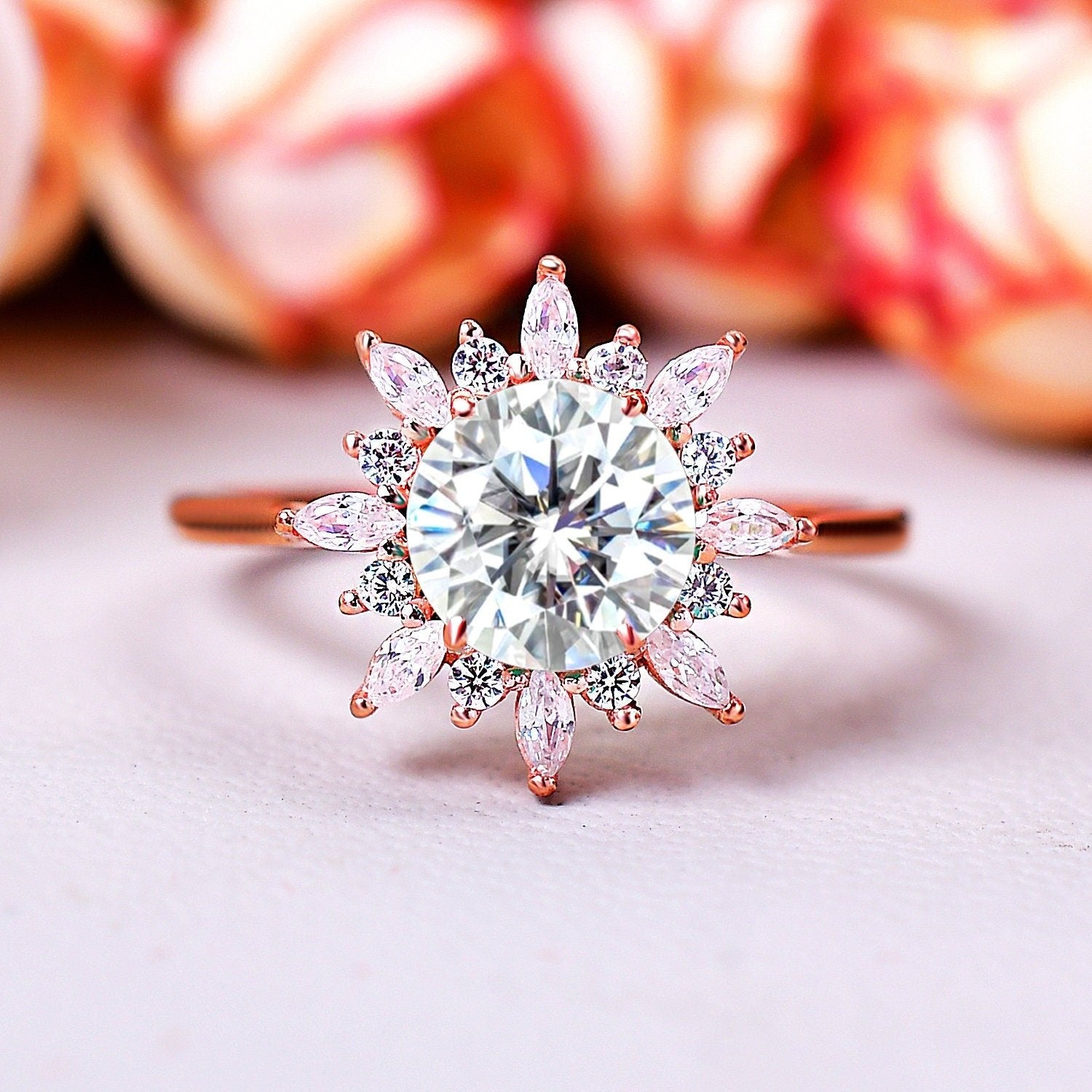How to Wear Your Engagement Ring and Wedding Band
Share

Wearing your engagement ring and wedding band together would be pretty straightforward, right? You’d be surprised how many people second-guess it. According to a report, 21% of people don’t wear their engagement ring daily, and 28% wear only their wedding band most of the time.
The blog post about “how to wear engagement ring and wedding band” is for you if, one minute, you’re admiring your gorgeous new sparkle… And the next, you’re wondering which ring goes on first.
Understand the Story Behind the Rings
Before we get into the "how-to," it's kind of neat to understand why we even wear these rings. You see, the tradition of wearing a wedding ring dates back thousands of years, with some of the earliest examples found in ancient Egypt.
Back then, if you chose to wear a ring, it would often be braided reeds or leather, representing eternal love and commitment: a circle with no beginning or end. The engagement ring is a more modern invention, with emphasis on diamond engagement rings gaining popularity in the Western world after the discovery of diamonds in South Africa and marketing strategies in the 20th century. It became a symbol of a promise to marry.
So, you have one ring signifying a promise and another signifying a lifelong commitment. How do you honor both on your hand? Let’s explore!
Which Ring Should Go First?
When you’re thinking “how to wear engagement ring and wedding band together,” the wedding band goes on first. Your engagement ring stacks above it. It’s a tradition that dates back centuries, but honestly, it’s also just practical. It keeps the more delicate, often pricier engagement ring in place and prevents wear and tear.
That said, traditions aren’t the boss of you. Some people wear their engagement ring solo. Some stack them in reverse. Others wear one on each hand. And some? They mix things up every other day. Whatever works.
Wearing Both: The Stacked Style
You now have both of your bling—an engagement ring and a wedding band—and are trying to stack them without your fingers feeling like they are in a constant turf war. Here is the trick:
Start with the wedding band. Put the wedding ring on first and then stack the engagement ring on top. This is the traditional approach, but you may want to experiment with the opposite order, too. Sometimes your fingers (and your comfort) have a mind of their own.
Once they are on, give them a little ring check: are you feeling snug or positional collision sibling style? Some styles and designs may not just get along together.
Pro tip: If they're sliding around too freely or not rubbing seamlessly, sure, a jeweler can resize them or solder them together. Either way, both rings will move together as one and save you some much-needed morning time if you're running late and don't have to think about putting two rings on. One ring = done!
How to Wear Your Engagement Ring
If you're not married yet (or just wish to keep it simple), you're going to wear the engagement ring on the left hand, ring finger. That’s the standard in most Western cultures. But again, if you’re left-handed and worried about scratches, or if you just prefer the look, you can always switch it up.
Quick tip: Make sure your ring fits perfectly. Engagement rings can be top-heavy, especially if there’s a big stone. If it spins or feels loose, get it resized. You don’t want to lose it while washing your hands or, worse, while eating tacos (trust us, it happens).
How to Wear Your Wedding Band
After the wedding, the wedding band joins the party. Traditionally, it goes on first, then the engagement ring. But if you like the look of the engagement ring first, go for it. Some people even alternate depending on their mood or outfit.
What if your rings don’t “fit” together?
There isn't always a perfect pairing for a wedding band—this is perfectly fine!
If your engagement ring has a heavy, bold setting or an odd shape, don't worry; you have a great solution. A contoured or curved wedding band can be a real lifesaver here. It'll contour perfectly to the engagement ring and help the two rings sit comfortably and flush against each other.
Have mixed metals? A white gold wedding band paired with another made of rose gold? That's ok! Mixing metals is actually super trendy and provides your wedding ring set with a distinct, modern, fresh aesthetic.
But if your rings are constantly rubbing together or scratching or feel like they are in any way clashing, here are some possible solutions: Wear them on separate hands for an "asymmetrical" look. Wear a thin spacer band in between the two rings to provide a bit of distance (and polish!).
How to Wear an Engagement Ring and Wedding Band Together
Stacking your rings is a chance to show off your style and tell your story. Most people wear both rings on the left ring finger, with the wedding band first and the engagement ring on top. This creates a cohesive look and lets the engagement ring’s center stone stand out.
But don’t be afraid to play around:
- Try different stacking orders.
- Add a third ring for special occasions.
- Switch hands if it feels more comfortable.
Just make sure your rings are comfortable, sized properly, and don’t dig into your neighboring fingers. If something feels off, talk to your jeweler—they can often adjust the fit or suggest a better pairing.
Matching Your Engagement Ring and Wedding Band
Matching isn’t just about looks—it’s about comfort and durability, too. Here’s what to keep in mind:
-
Metal: Stick with the same metal for a seamless look, or mix metals for something bold.
Style: Pair similar design elements, or go for contrast if you like a more eclectic vibe.
-
Fit: If your engagement ring has an odd shape, consider going custom for a band that nests around the shape.
-
Engraving: Put a personal touch on your ring set and engrave a date, initials, or saying within both bands. This adds both a little personal touch and will be some fun for you both!
What Matters to You?
No one’s going to chase you down for wearing your rings “wrong.” The best way to wear your engagement ring and wedding band is the way that feels right to you. If you love the tradition, go with it. If you want to mix things up, do it. If you change your mind next year, that’s fine too.
And if you’re ever unsure, just ask your jeweler or a friend who’s been there. Most people are happy to share what’s worked for them (and what hasn’t).
Final Words!
So, how do you wear your engagement ring and wedding band? However you want. Stack them, swap them, mix metals, or keep it classic. The only thing that really matters is that you love the way they look and feel.
If you’re still figuring it out, try different combinations for a week or two. See what feels natural. And don’t stress—these rings are about your story, not someone else’s rulebook.
FAQs
Q1. Which comes first, the engagement or the wedding band?
Traditionally wedding bands come first—closer to the heart—then the engagement ring. But it’s your hand, your love story, your decision.
Q2. Do I wear my engagement ring and wedding band together?
Yes, most people do! Whether stacked together on the same finger or on separate hands, wearing both rings is a beautiful way to recognize your engagement and wedding as one stylish homage to love!
Q3. What is the rule about engagement rings and wedding bands?
There’s no hard and fast rule, but traditionally wedding bands sit below engagement rings on the left hand. These are modern times, and love means you can create your own rules.
Q4. Do you wear a wedding band on top or bottom?
Tradition says bottom—closer to your heart. But there are no fashion police here; stack them however looks and feels best for you.
Q5. Where not to wear your engagement ring?
Skip it at the gym, beach, while gardening, or during cleaning. Harsh chemicals, rough surfaces, and heavy lifting don’t play nice with precious stones or dainty settings.
Q6. What is the traditional way to wear a wedding band and engagement ring?
Traditionally, you stack them on your left ring finger—wedding band first, engagement ring on top. It’s symbolic, sweet, and still totally timeless.



